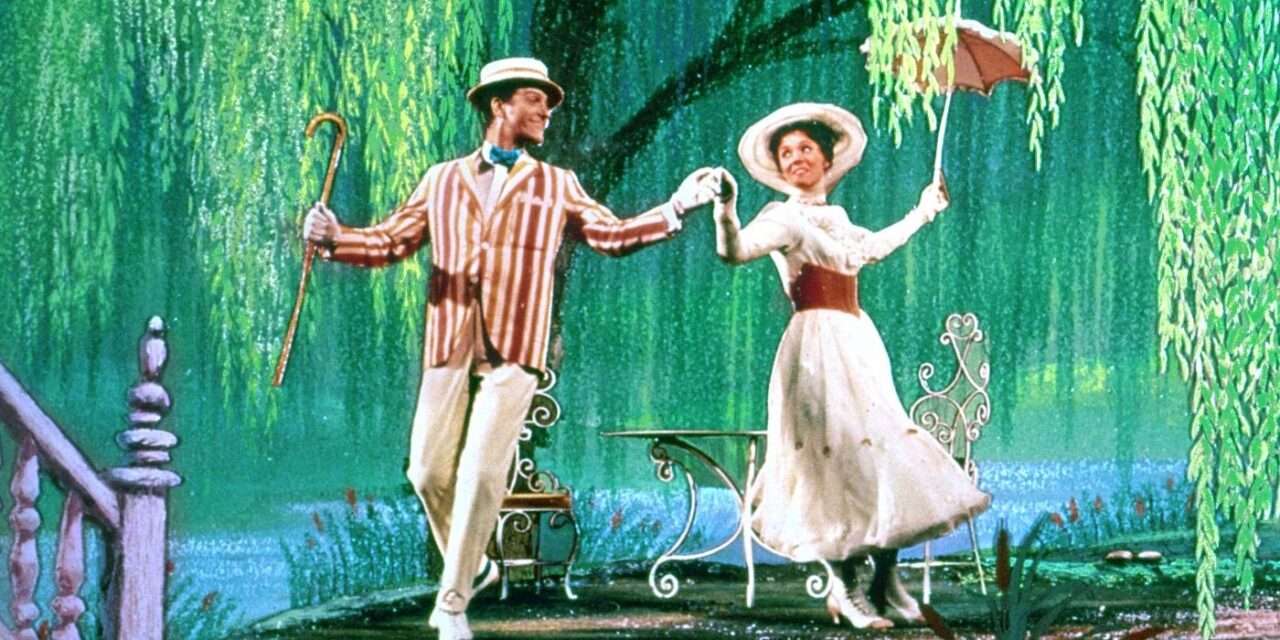When it comes to timeless family entertainment, few titles resonate as deeply as Disney’s 1964 masterpiece, Mary Poppins. This enchanting film, starring Julie Andrews and Dick Van Dyke, brought the magic of P. L. Travers’ beloved character to the silver screen, earning the studio its first-ever Best Picture nomination at the Oscars. But the journey to bring Mary Poppins to life was anything but smooth—a tale chronicled with a mix of reverence and dramatization in Disney’s 2013 film, Saving Mr. Banks.
Walt Disney’s quest to adapt Mary Poppins began in the early 1940s after he promised his daughter that he would turn her favorite book into a film. Despite his persistence, author P. L. Travers was staunchly opposed to selling the film rights to Disney. She feared her sharp and somewhat unsentimental nanny would be softened beyond recognition. Travers’ apprehensions weren’t unfounded, as her literary Mary was far more stringent and vain than the practically perfect nanny portrayed by Julie Andrews.
It took nearly 20 years for Disney to secure the rights, offering Travers a significant sum along with the assurance that she could serve as a consultant. Despite this, her involvement was fraught with tension. Travers attended several planning sessions with Disney’s creative team, often clashing over details. According to Disney Legend Richard Sherman, these sessions were intensely challenging, marked by Travers’ critical nature and her frequent exclamations of “No, no, no!”
While Travers’ difficulties with the film adaptation are well documented, her story took a more harmonious turn when it came to the stage adaptation. Travers had it stipulated in her will that no American could further adapt her work, a hurdle that seemed insurmountable until famed producer Cameron Mackintosh stepped in. Mackintosh, with his storied history of successful musicals, convinced Travers of his dedication to staying true to her books while incorporating the indelible songs from the Disney film.
The resulting stage musical, a collaboration between Mackintosh and Disney Theatrical Productions, opened to great acclaim. Unlike the film, this adaptation drew heavily from Travers’ original stories, reintroducing characters and adventures left out of the movie. The musical enjoyed a lengthy and successful run in London’s West End and on Broadway, cementing its place in theatrical history.
Though P. L. Travers was never completely satisfied with Disney’s film adaptation, the legacy of Mary Poppins lives on through its numerous forms. The movie continues to enchant audiences worldwide, and the stage version brings Travers’ original vision to life for new generations. Whether on screen or on stage, Mary Poppins remains a testament to the enduring charm and complexity of Travers’ creation.
Mary Poppins is available to stream on Disney+ in the U.S.
Source: Collider
Share your thoughts in the comments below and let us know what you think about this fascinating tale of creative collaboration and clash! Don’t forget to share this story with other Disney enthusiasts.



